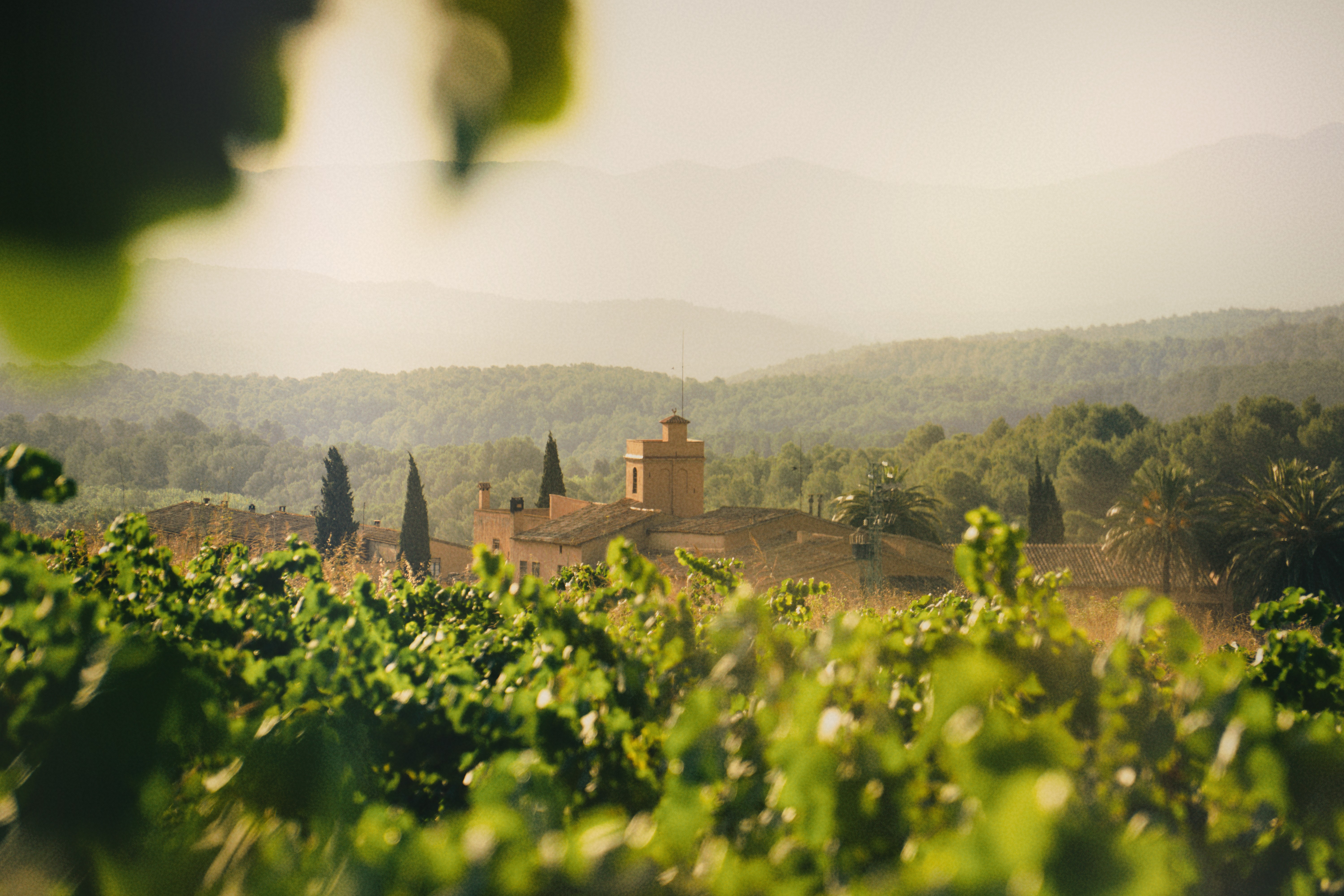pre 1400's
Can Feixes lies in a privileged location on the slopes of the interior mountains overlooking Barcelona and Montserrat where it is believed a small church dedicated to Saint Eulalia, the patron saint of Barcelona, was founded by the Bishop of Barcelona. Care of the church and its land - whose boundaries remain unchanged to this day - was charged to Jaume Feixes by the Baron of the nearby castle of Cabrera.
1400
The earliest official record of 'Mas la Pineda' (meaning 'House of the Pines' and later known as 'Can Feixes,' meaning 'House of Feixes') appears in a local census in the year 1400 .

1690
The oldest surviving headstone on the property today stands at the east-facing entrance to the Masia's courtyard, nestled between the Capella de Santa Eulalia and the winery.

1700
The original east-facing foundations of the masia are renovated, with the living quarters situated on the first floor and the ground floor dedicated to the wine cellar, where the estate's harvest was vinified and stored.

1768
The entrance to the wine cellar in the original east-facing section of the masia bears this inscribed date, accompanied by "8BRE ALS 27" (October 27th) and the Feixes family name, which now serves as the symbol of the modern-day brand.

1790
The date inscribed on the wooden gate leading into the masia’s courtyard stands as a testament to its history. Still as protective as it was over 230 years ago, the gate remains fully functional today.

1878
The restoration of the Capella de Santa Eulalia is completed, along with the repositioning of the main entrance from the west-facing wall to the south-facing wall, following the completion of the south-facing portion of the masia three years earlier.

1901 - 1941
Can Feixes falls into disrepair during the early 20th century, following the disappearance of the Feixes family line. With the estate and its land in ruin, it is acquired by brothers Josep Maria and Miquel Huguet i Pommés from the nearby town of Piera, who set out to restore the land and its winemaking heritage to its former glory.

1945
The last production of "Vi Ranci" to be crafted and stored in the masia's original cellar, the remnants of which still linger in the air, filling the centuries-old space with its sweet, sherried aroma to this day.

1945 - 1983
A careful restoration of the estate and its 80 ha of vineyard begins, with the initial production of grapes sold to generate income for the renovation of the winery.

1983
The first bottling of a modern-day "Can Feixes" wine, our "Blanc Selecció," is released under the estate's name. Crafted inline with the estate's self-sufficient philosophy, it celebrates its rich history and long-standing winemaking tradition.

1990
The modern business' first export partner in the Netherlands marks the beginning of many special and lasting relationships around the world, connections that continue to thrive today.

2004
Due to growing success, additional underground cellar space is needed. Foundations are dug to extend the existing caves, using recycled tunneling infrastructure to create a state-of-the-art space.

2008
The new cave is complete. Situated 15 meters underground, it benefits from natural ventilation, with temperature and humidity also naturally regulated, providing ideal conditions for the careful maturation of Can Feixes’ prized wines for decades.


